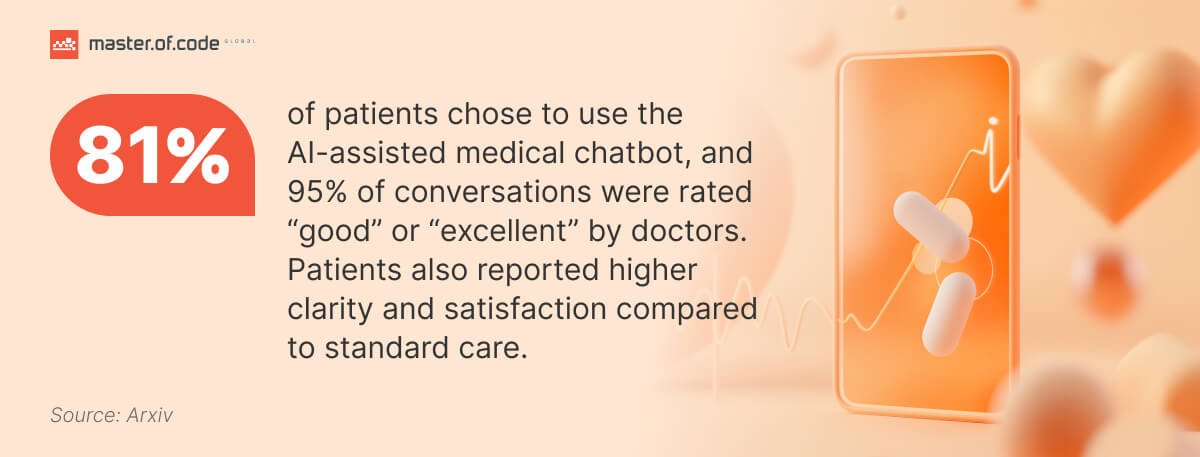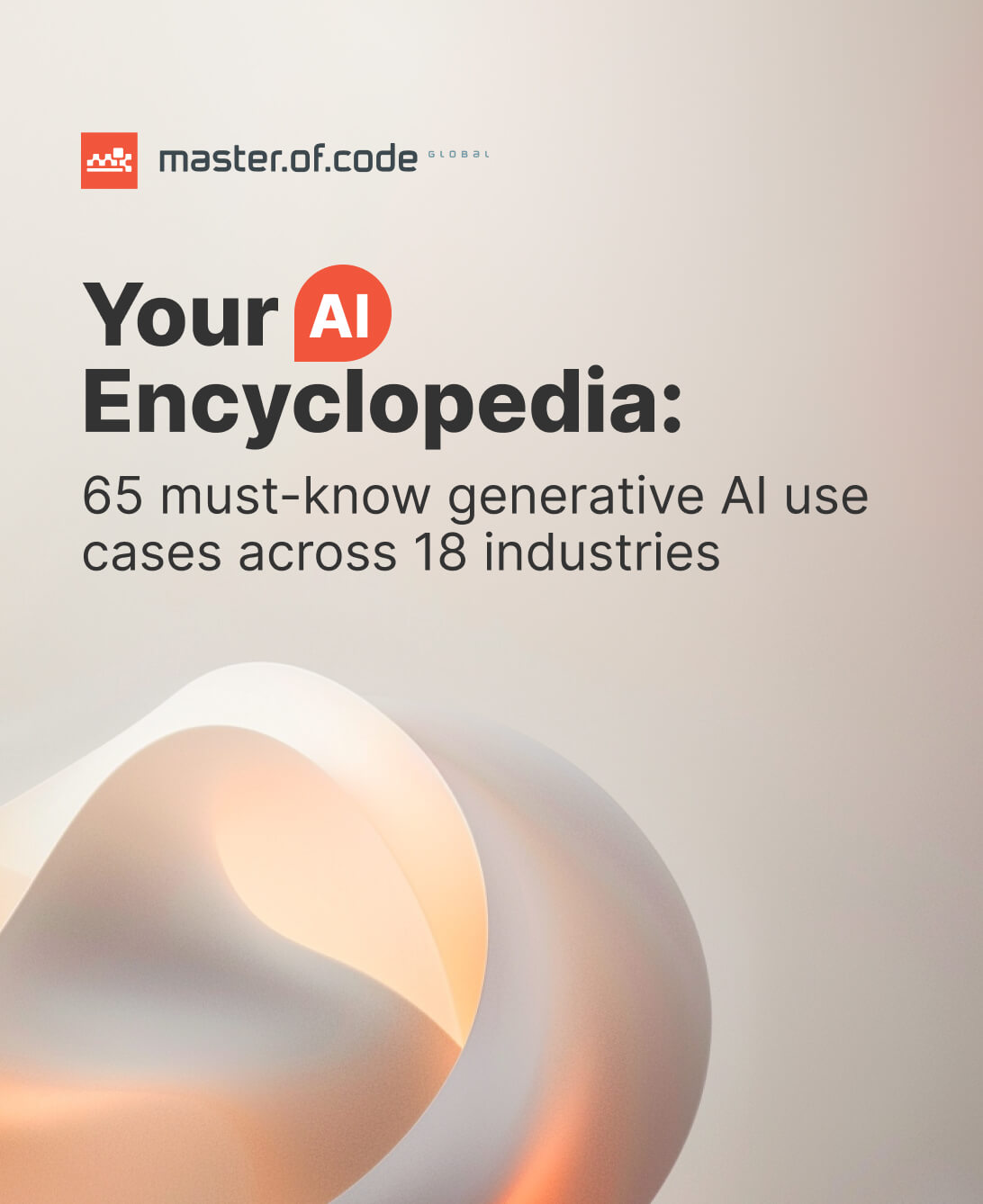You’re a patient trying to reschedule an appointment. After clicking through option after option on the phone, you’re stuck on hold—AGAIN. Meanwhile, on the other side is the organization’s staff buried in back-to-back calls, answering the same repetitive questions for the tenth time today.
Sound familiar?
This is the daily reality in many healthcare practices. Administrative overload, long response times, and disjointed communication aren’t just frustrating—they’re barriers to timely care and staff well-being. Providers are stretched thin, trying to deliver quality service while drowning in clerical tasks that sap energy and slow down operations.
But what if patients didn’t have to wait? What if your front desk could focus on care, not chaos? That’s where Conversational AI in healthcare comes in.
Already adopted by forward-thinking clinics like Cleveland Clinic, Kaiser Permanente, and Northwell Health, modern tools are transforming how practices communicate. They handle appointment scheduling, FAQs, intake forms, post-visit follow-ups—instantly, accurately, and 24/7. They do not replace human empathy; they protect it, giving staff the freedom to engage where it matters most. This growing recognition of AI’s supportive role is fueling rapid adoption—so much so that the global Conversational AI technology in healthcare market is expected to reach USD 48.87 billion by 2030, reflecting a compound annual growth rate of 23.84%.
Fewer bottlenecks. More bandwidth.
The result? Happier patients, less stressed teams, and a practice that runs like it should: smoothly, efficiently, and recipient-first. Curious how it works? Dive into the article for real examples.

Table of Contents
The Foundation: Understanding Healthcare Conversational AI Technologies
Behind every smart, responsive healthcare voicebot or medical assistant chatbot is a powerful set of technologies working seamlessly to understand, interpret, and respond like a human. Let’s break down the core components—without the jargon—so you can see how they actually work in practice.
Natural Language Processing (NLP): Making Sense of Human Language
At its core, Natural Language Processing is what allows machines to read and understand human language. Think of it as a translator that helps computers make sense of the way people actually talk—complete with slang, typos, and all. Approximately 80% of healthcare data is unstructured, such as clinical notes and lab reports, which NLP can process to extract meaningful insights.
In the context of healthcare, NLP enables an AI assistant to handle patient questions like, “Do I need to fast before my blood test?” or “Can I speak with a nurse?” and turn those into structured data the system can act on. Without NLP, the artificial intelligence wouldn’t know where to start.
Natural Language Understanding (NLU): Figuring Out What We Really Mean
While NLP reads the text, Natural Language Understanding digs deeper to interpret the meaning behind it. This is the part that distinguishes between, “I need to cancel my appointment” and “I want to schedule a visit”—two phrases that might sound similar but require opposite actions.
In healthcare, NLU is crucial. It ensures that when a patient types “I’m not feeling well after surgery,” the AI doesn’t just identify keywords but understands the urgency and context, triggering the right next step—like alerting a provider or offering follow-up options.
Natural Language Generation (NLG): Crafting a Human-Like Response
Once the system identifies the intent, Natural Language Generation steps in to formulate a clear, helpful, and empathetic reply. Think of NLG as the AI’s voice—it’s what turns raw data into a friendly message like, “No problem, your appointment has been canceled. Would you like to reschedule for another day?”
NLG makes sure responses aren’t just technically correct—they sound natural and reassuring. This is especially important in healthcare, where clarity and tone can directly impact trust and patient comfort. In a study analyzing recipient experiences, sentiment analysis models achieved an F1 score of 0.97 for positive texts, demonstrating the effectiveness of NLG in capturing and conveying patient sentiments accurately.
Together, these three technologies form the backbone of any Conversational AI for healthcare solution. They’re not just fancy acronyms—they’re the reason your chatbot sounds human, understands intent, and provides real value in real time.
Practical Applications: Where Conversational AI in Healthcare Makes a Difference
Artificial intelligence isn’t just a buzzword—it’s a hands-on tool that improves care delivery and optimizes operations across every stage of the patient experience. Here’s how Conversational AI for healthcare solves real-world problems today:
Appointment Scheduling
Long hold times and back-and-forth phone calls are frustrating for patients and time-consuming for staff. AI-powered assistants automate booking, rescheduling, and cancellations 24/7—reducing call volumes, cutting wait times, and freeing up front-desk resources.
Patient Care Management
From pre-visit prep to post-discharge recovery, recipients often need clear, timely guidance. Conversational AI for patients provides consistency across the journey—sending pre-visit instructions, answering post-op questions, and reinforcing care plans without the need for repeated calls or emails.
Recipient Support
Simple questions shouldn’t require a nurse’s time. AI chatbots offer round-the-clock help for common inquiries like clinic hours, directions, or service availability—giving patients instant solutions and reducing administrative strain.
Answering Questions
“Can I take this with food?” “What are the side effects of my medication?” Conversational AI services handle frequently asked questions about symptoms, prescriptions, or procedures, delivering medically reviewed clarifications without bottlenecks.
Telehealth and Virtual Consultations
Confusion around automated care logistics is common. AI in telehealth helps patients prepare by gathering intake information, explaining how to access the platform, and even checking their device readiness—making virtual visits smoother for both sides.
Proactive Reminders
Missed appointments and skipped medications cost time and outcomes. Conversational AI sends timely nudges—like appointment confirmations, refill prompts, or annual screening reminders—boosting adherence and reducing no-show rates.
Invoice Payment and Claims
Medical billing is notoriously complex. AI for claims processing simplifies the process by answering questions about charges, helping with online payments, or walking patients through the steps of submitting an insurance claim.
Seamless Bot to Agent Hand-off
Not every issue can be solved by automation. When a conversation exceeds the bot’s capabilities, artificial intelligence guarantees a smooth, context-aware hand-off to a human—passing along the chat history so the patient doesn’t need to repeat themselves.
Prescription Support
Whether it’s checking refill eligibility, understanding dosages, or learning about drug interactions, Conversational AI gives people instant access to reliable medication information—often integrated directly with pharmacy systems.

Real-World Examples of Conversational AI in Healthcare
Implementing Conversational AI for health systems isn’t theoretical—it’s already producing measurable results. For instance, hybrid chatbots have been shown to reduce hospital readmissions by up to 25%, improve patient engagement by 30%, and cut consultation wait times by 15%. At Master of Code Global, we’ve partnered with leading healthcare and insurance organizations to design secure, personalized experiences that scale. Here are two real-world examples of how our solutions are redefining services and medical operations.
Enhancing Patient Journeys for a U.S. Healthcare Leader
One of the largest players in the U.S. medical sector turned to Master of Code Global to create an automated messaging program that would proactively guide people through post-care and wellness journeys. Instead of a traditional chatbot, we built a multi-channel digital assistant capable of initiating tailored 60-day messaging campaigns triggered upon patient opt-in via SMS.
The system obtains explicit consent in the first interaction, offering full compliance, and then tailors content throughout the care cycle based on the recipient’s profile and status. From check-in reminders to medication adherence nudges, this assistant acts as a virtual partner—not just a responder.
Results: A fully automated, scalable messaging framework that personalizes outreach while minimizing manual intervention. It boosted patient engagement, improved continuity of care, and met stringent privacy standards with confidence.
Supporting Medication Adherence for a Canadian Insurance Giant
A major Canadian insurer partnered with Master Of Code Global to create a virtual health companion for their pharmacy benefit users. This mobile-first solution goes beyond reminders—it’s a pocket-sized AI-driven assistant designed to help people track, understand, and manage their medications in real time.
Through intelligent content aggregation and seamless UX integration, the platform enables users to search for medications, set schedules, and get detailed insights—all from their smartphone. The system also aggregates drug data and updates regularly via machine learning models.
Results:
- 43% reduction in customer support inquiries related to medications
- Over 1 million records processed and secured without a single data breach
- 320% growth in the medication database through AI-powered expansion

These success stories demonstrate how healthcare Conversational AI is far more than chat automation. When implemented with vision and precision, it becomes a strategic asset—one that empowers patients, improves service delivery, and drives results across the care ecosystem.
And the best part? These results aren’t exclusive to large institutions. Whether you’re running a local clinic or a national network, Conversational AI for the healthcare industry can be tailored to meet your specific challenges and scale with your needs.
Integrating Conversational AI with Existing Healthcare Systems
One of the biggest concerns about artificial intelligence adoption is this: Will it work with the systems we already use? The answer is yes—if it’s done right.
Seamless integration of Conversational AI technology in healthcare isn’t just a nice-to-have. It’s the foundation that allows digital assistants to deliver accurate, real-time support and unique care without adding friction or risk.
Electronic Health Records (EHR): Fueling Personalization
Conversational AI becomes exponentially more valuable when connected to EHR systems. By securely accessing a patient’s medical history, upcoming appointments, or prescribed medications, digital assistants can deliver meaningful, context-aware responses like, “You’re due for your annual check-up next week. Would you like to confirm that now?” Instead of generic answers, recipients receive tailored guidance—instantly and securely.
FHIR: The Backbone of Interoperability
Fast Healthcare Interoperability Resources is a standardized framework for exchanging healthcare information across systems. It enables Conversational AI to interact safely and efficiently with EHRs, lab systems, and patient portals—without creating data silos. This offers continuity of care and accurate data flow, no matter how many vendors or platforms are in play.
APIs: The Connectors That Make It All Work
Application Programming Interfaces are what allow Conversational AI to plug into your existing infrastructure. Think of them as secure pipelines that move data between systems in real time:
- EHR APIs pull and update records, allowing bots to confirm allergies, medication lists, or previous visit details.
- Appointment Scheduling APIs sync directly with practice calendars, enabling patients to book or cancel without staff intervention.
- Diagnostic and Imaging APIs let people ask about test results—without exposing sensitive data—by directing them to secure summaries or alerts when new findings are available.
AI in hospital management also benefits from these integrations, enabling smoother operations and better patient oversight across departments.
HIPAA Compliance: Built In, Not Bolted On
When it comes to healthcare, security isn’t optional. Every Conversational AI solution we build at Master of Code Global is architected for HIPAA compliance from the ground up. We make sure that Protected Health Information (PHI) is handled with strict adherence to privacy standards, audit protocols, and data governance best practices.
Because trust isn’t something you can patch in later—it’s something we engineer from the start.
Navigating the Challenges of Conversational AI in Healthcare Implementation
Implementing Conversational AI for healthcare brings life-changing potential—but it also comes with serious responsibilities. 64% of healthcare IT professionals reported concern over their organization’s vulnerability to ransomware attacks. At Master of Code Global, we’ve helped healthcare organizations navigate these complexities with clarity and confidence. Here are the key challenges—and how we tackle them.
Security: Safeguarding Patient Trust
Healthcare data is among the most sensitive information any organization handles. A breach doesn’t just hurt reputations—it jeopardizes lives. That’s why robust encryption, multi-factor authentication, and strict access controls are foundational in every solution we build. From day one, our systems are designed to comply with HIPAA and other regulatory standards, securing that patient data remains protected at all times.
Accuracy: Getting the Right Answer, Every Time
In healthcare, misinformation can be dangerous. Conversational AI must deliver responses that are both correct and clinically sound. Our approach involves rigorous training, validation, and continuous learning using medically vetted sources. We also include fallback protocols: if the artificial intelligence isn’t 100% certain, it escalates to a human agent, because safety always comes first.
Integrations: Bridging Complex Ecosystems
Healthcare IT environments are rarely plug-and-play. Legacy systems, fragmented data sources, and outdated APIs often complicate integration. With years of experience navigating this maze, we build connectors that work across platforms—modern and legacy alike. Whether it’s syncing with an EHR or interfacing with diagnostic platforms, our team confirms smooth, secure data flow without disrupting daily operations.
Ethical Considerations: Building with Care
Patients have the right to know how their information is used. That’s why every deployment we lead includes a transparent data usage policy and built-in consent mechanisms. We design for clarity, control, and autonomy—so people always feel informed, not monitored.
Algorithmic Bias and Fairness: Serving Every Patient Equally
AI systems reflect the data they’re trained on. Without careful tuning, that can introduce bias—particularly around race, gender, or language. We proactively audit our models to identify and mitigate bias, verifying that every person, regardless of background, receives fair and equal assistance.
That’s where thoughtful healthcare AI consulting makes all the difference. It’s not just about implementing tech—it’s about doing it with purpose, accountability, and care. That’s the standard we uphold in every project we deliver.
The Transformative Benefits of Conversational AI in Healthcare
When thoughtfully integrated, artificial intelligence doesn’t just support operations—it transforms how care is delivered and experienced. It brings measurable value to both providers and patients by optimizing processes, improving interactions, and making healthcare more responsive, effective, and accessible.
For Healthcare Providers
Improved Efficiency
By automating repetitive administrative tasks—like appointment confirmations, insurance inquiries, and post-visit follow-ups—Conversational AI in healthcare frees up clinical and support staff to focus on what truly matters: patient care. This reallocation of effort boosts productivity across the board.
Elevated Diagnostics
Virtual assistants can collect preliminary recipient data, symptoms, and history before the visit—giving physicians a head start. With more structured information upfront, providers can make more informed decisions in less time.
Streamlined Operations
From intake to discharge, Conversational AI standardizes communication and automates processes. It guarantees the right information reaches the right people at the right time, reducing bottlenecks and delays across departments.
Improved Customer Service
Patients no longer need to wait on hold. With 24/7 access to accurate, consistent answers, Conversational AI elevates the care experience—leading to higher satisfaction scores and stronger loyalty.
Boosted Data Management
Every interaction becomes a data point. Smart tools can collect, tag, and analyze these conversations to uncover patterns, identify pain points, and inform smarter operational decisions.
Improved Patient Engagement
By enabling proactive communication—reminders, check-ins, health tips—the algorithm keeps recipients actively involved in their care. That engagement directly correlates with better adherence and outcomes.
Cost Savings
Reducing the burden on human resources for routine queries means fewer operational expenses. Whether scaling support or managing peak periods, AI offers cost-effective consistency without compromising quality.
For Patients
24/7 Access to Information
Need to check appointment details at midnight? No problem. Conversational AI makes sure people can get reliable answers on their terms—anytime, anywhere.
Convenient Communication
Whether it’s a text message, voice command, or web chat, patients can interact through the channel they’re most comfortable with—without downloading special apps or navigating portals.
Personalized Health Information
The AI adapts responses based on individual profiles, past interactions, or current care plans—delivering reminders, educational materials, or prompts that feel truly relevant.
Remote Monitoring Capabilities
In more advanced setups, artificial intelligence can collect data from wearable or at-home devices and forward it securely to care teams—keeping clinicians informed between visits.
Reduced Wait Times
Instead of holding on a phone line or waiting days for a call-back, patients receive instant support for routine needs—making their healthcare experience faster and more convenient.
Self-Service Options Offer Convenience
Recipients can schedule, reschedule, pay bills, or request records—without needing staff assistance—giving them more autonomy over their care.
Improved Access to Medical Records
AI can assist patients in retrieving lab results, reviewing care instructions, or accessing personalized documents—all through a secure, guided interface.
The Future Horizon: Predictions for Conversational AI in Healthcare
Artificial intelligence in the medical sector is just getting started. As the technology matures, we’re moving from task automation to context-aware systems that actively improve care outcomes. At Master of Code Global, we’re already working on the next wave of innovation—here’s where we see the future heading.
Smart Patient Triage and Symptom Checking
Tomorrow’s AI won’t just handle inquiries—it will help prioritize care. More advanced models will accurately assess symptoms, ask targeted follow-up questions, and recommend the most appropriate next steps: urgent treatment, telehealth, or self-care guidance. These systems will lighten the load for clinicians while improving early detection and facilitating timely intervention.
Post-Treatment Care and Support
Expect AI to take on a more proactive, ongoing role in recipient recovery. From sending timely medication reminders to offering guidance on wound care, diet, or activity restrictions, technology will assist patients stick to treatment plans and feel assisted between visits. Personalized check-ins will minimize complications, prevent readmissions, and make follow-up feel more human—without requiring additional staff time.
Smart Hospital Rooms
The care suite of the near future will be voice-activated and AI-enabled. Patients will use natural language to control lights, request help, or ask about their plan. These intelligent environments will reduce staff interruptions while elevating comfort, autonomy, and satisfaction, especially for those with mobility challenges or long-term stays.
Generative AI
Beyond automation, applications of Generative AI in healthcare bring creativity to communication. These systems will craft empathetic, context-aware responses that reflect not only clinical information but also emotional nuance. Imagine a virtual assistant delivering a tailored explanation of a diagnosis, translating complex medical language into something a patient can truly understand—and even relate to.
AI Agents
We’re already evolving beyond simple chatbots. The next generation of digital agents will be autonomous, proactive, and multi-functional. They’ll manage pre-visit paperwork, check eligibility, track care milestones, and initiate follow-ups—all while collaborating across systems. The agents won’t just react—they’ll anticipate patient needs and help care teams operate with greater precision and foresight.
As these technologies become mainstream, Conversational AI won’t just support healthcare—it will reshape it even further. And at Master of Code Global, we’re ready to help providers lead that transformation, not follow it.
Partnering with Master of Code Global for Conversational AI Implementation
We start with strategic planning, working closely with your team to identify the highest-impact use cases—whether it’s automating appointment workflows, improving post-op care or virtual triage. Every solution is rooted in your specific operational challenges and person’s needs.
From there, our team handles custom development—creating Conversational AI tools that aren’t just functional, but purpose-built for healthcare. Voice, chat, or hybrid—we design approaches that elevate patient engagement and drive measurable outcomes.
Our engineers secure seamless integrations with EHR platforms, FHIR frameworks, scheduling tools, and diagnostic systems—bridging legacy infrastructure with modern AI without disrupting care delivery.
Security and compliance aren’t afterthoughts. Every solution is built to meet strict HIPAA standards, with enterprise-grade encryption, data governance, and privacy protocols baked in from day one.
Finally, we don’t launch and leave. Through continuous optimization, analytics, and refinement, we make sure your artificial intelligence evolves with your practice—delivering sustained value and future-ready performance.
Ready to transform your patient experience with Conversational AI in healthcare? Let’s build something extraordinary—together.
Ready to build your own Conversational AI solution? Let’s chat!







